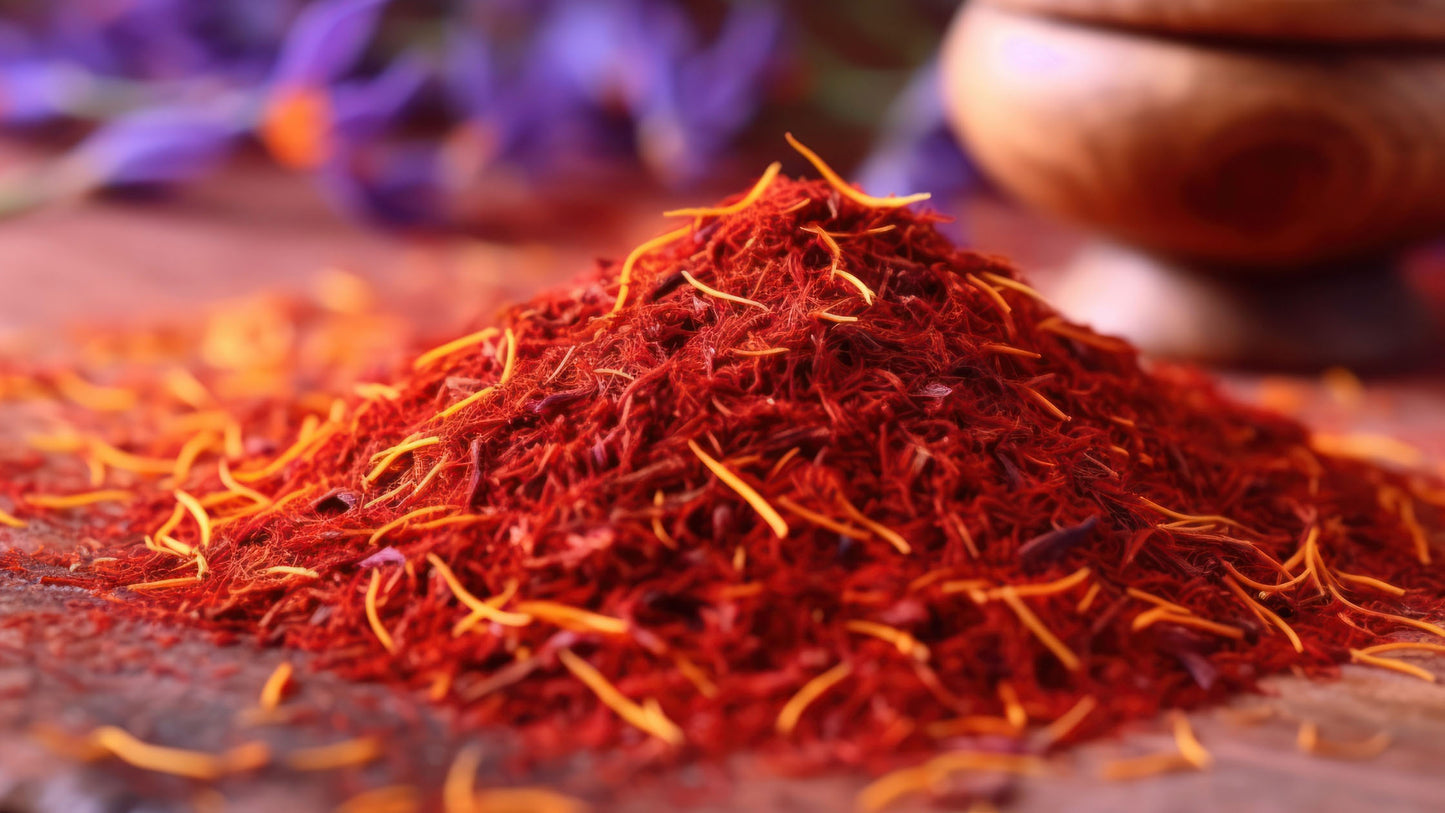Offer
Provide additional details about the offer you're running.

Saffron, a spice as old as time, has always been a symbol of luxury and culinary excellence. Its journey from the fields to our kitchens is a tale of meticulous care and tradition. Each thread of saffron, derived from the stamen of the Crocus sativus flower, is a testament to the labor and love that goes into its cultivation. This precious spice, known for its vibrant color and unique flavor, has been a cornerstone in various cuisines, adding a touch of elegance to every dish it graces.
The cultivation of saffron is a labor of love and patience. The Crocus sativus flower, from which saffron is harvested, blooms for just one week each year, yielding only three stamens per flower. This painstaking process of handpicking each stamen contributes to saffron's status as one of the most expensive spices in the world. However, the value of saffron extends far beyond its price tag. Its ability to enhance the flavors and colors of dishes is unparalleled, making it a cherished ingredient in kitchens worldwide.
Understanding how to use saffron effectively is key to unlocking its full potential. Unlike other spices, saffron requires specific methods to release its aromatic and coloring properties. Here are some of the most effective ways to incorporate saffron into your cooking, ensuring that you make the most of every precious thread.
One popular method is grinding saffron into a fine powder. This technique is particularly favored in Persian cuisine, where saffron is a staple ingredient in dishes like tahdig, various polows, and stews. Grinding saffron not only helps in releasing its flavor and color more efficiently but also allows for more even distribution throughout the dish. To grind saffron, start with a small mortar and pestle, adding a pinch of sugar or salt as an abrasive to aid in breaking down the threads. The resulting powder can then be dissolved in hot water, creating a rich, aromatic liquid that can be added to dishes at any stage of cooking.
Another effective way to use saffron is by making saffron tea. This method involves steeping the saffron threads in hot water or milk, allowing the flavors and colors to infuse into the liquid. The key to perfect saffron tea is using water that is hot but not boiling, ideally between 160°F and 170°F. This temperature range helps in extracting the maximum flavor from the saffron while avoiding any bitterness. After steeping for about 15 minutes, the saffron tea is ready to be added to your dish, imparting a deep, golden hue and a rich aroma.
For dishes that involve a significant amount of liquid and longer cooking times, saffron can be added directly. This method is ideal for recipes like risotto alla Milanese or bouillabaisse, where the simmering process allows the saffron to gradually release its flavor and color into the dish. When using this method, it's important to add the saffron early in the cooking process, giving it ample time to bloom and infuse the dish with its distinctive essence.
In conclusion, saffron is more than just a spice; it's a culinary treasure that has stood the test of time. Its unique flavor profile and coloring ability make it a versatile ingredient, capable of transforming a simple dish into a gourmet masterpiece. Whether you choose to grind it into a powder, steep it as a tea, or add it directly to your recipes, saffron promises to elevate your cooking experience. So, the next time you hold a thread of saffron in your hand, remember the journey it has taken and the culinary magic it holds within.